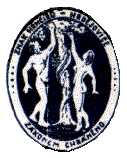
|
Being a potter and
making good crockery is not an easy thing. It
requires much experience and practice. In
pottery, practical experience is passed down from
generation to generation and it was the same in
the Stepanek potters family.

|

|
| 1901
|
1939
|
Great-grandfather
Matej Stepanek already worked in this profession
at the end on the 18th century. Grandfather Karel
Stepanek, born in 1834 started with the
manufacture of crockery in Kasejovice, using
white clay, fired at a temperature of up to 1300
degrees C. At that time, this was a great advance
and the crockery sold well. That is also why
Grandfather taught his four sons the pottery
craft. One of them, Josef Stepanek, born in 1866,
earned practice in various pottery shops. In 1891,
he left for America, where during the next six
years, he gained much experience. When he
returned, he worked for his father for several
more years. In 1900, a new pottery shop was
built, which he bought a year later.
In the area of
Hrdejovice, there is much clay of various quality
and that is why he visited the State School of
Pottery, in order to better access the analysis
of clays. With year long practical experiences,
he came up with his own method of washing and
mixing several types of clay. When his older son
Josef, having completed apprenticeship, was at
the State School of Pottery in Bechyne,
Hrdejovice pottery was already in great demand
for its fineness, which is reached only through
washing and longevity of cooking which is a
result of the correct composition of clays.
After completing
economic school, his younger son Karel was also
apprenticed as a potter. When their father died
in 1928, the business already had experienced
successors. Both brothers, by introducing
machines for processing clay, perfecting
production and constant trials, created crockery
which resists high temperatures without cracking.
The crockery is
under the registered trade mark
In 1950,
nationalisation came. The small factory with 23
employees was taken away from the owners and
became the co-operative Jihotvar - Veseli nad
Luznici. The former owners remained employed in
the factory, Josef as an artist and Karel as a
salesman. They had to, however, repay debts for
the newly built areas realised before
nationalization from their wages. Later, Karel
was only allowed to work as a manual worker in
the joined cement plant. After a few years, he
returned to his beloved pottery clay in
Hrdejovice as a manual worker and stoker of the
kilns.
The sons of both
brothers continued in the tradition and studied
the School of Pottery in Bechyne. After 1989,
Karel, now by himself, requested the return of
the entire former property within the frame of
restitution. By that time, the co-operative had
expanded the enterprise by building halls on the
former, and newly purchased property. The old
buildings were partially torn down and the
remaining ones were expanded. Unfortunately, the
law of restitution was very poorly solved and
allowed for various interpretations. A conflict
ensues and the Jihotvar co-operative was
unwilling to give up the factory. After five
years, the court decided to give up the old
buildings. But without the
property. Mr. Karel Stepanek did not live to hear
this verdict.
His son Josef and
grandson Petr, who was apprenticed to the craft
by his father, continue to devote themselves to
pottery production in their studios in Prague,
and thus continue in the tradition with already
the sixth generation of pottery Stepaneks.
Karel
Stepanek 1990.
|